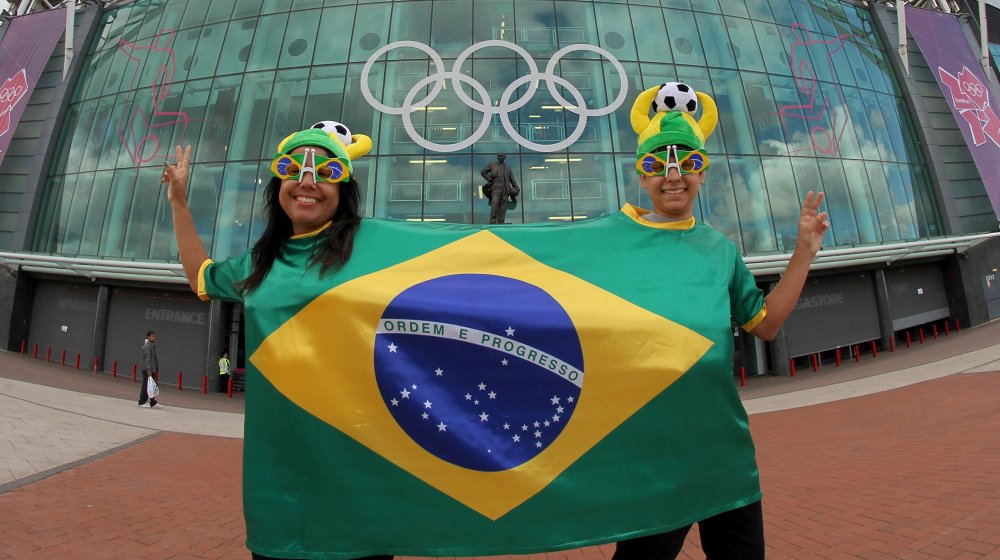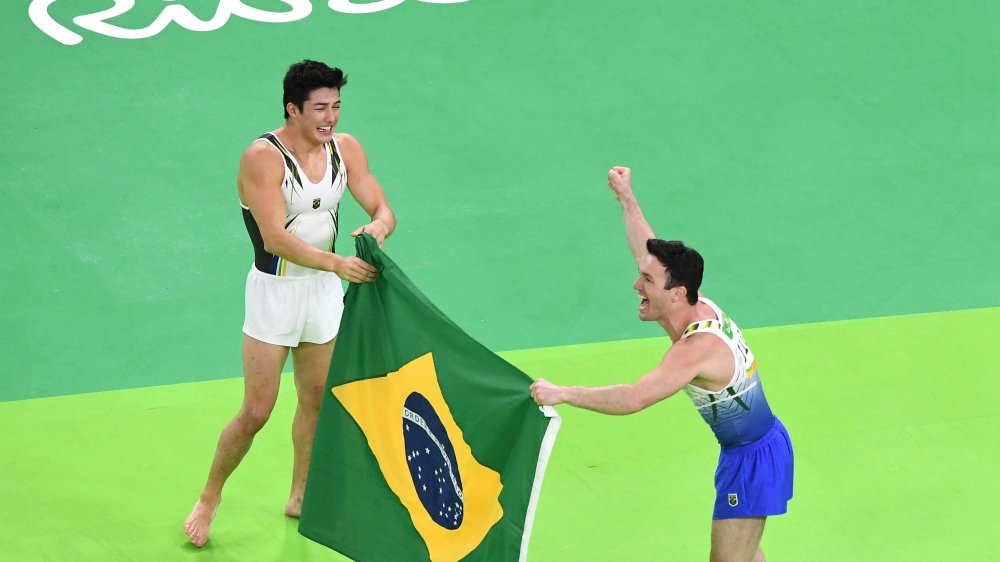The Real Meaning Behind The Brazilian Flag
The Brazilian flag stands out. It's bright green and in the middle a yellow diamond with a blue globe. On the globe are stars and the motto "Ordem e Progresso". Or in English — "Order and Progress." It represents many things, as most flags do, and remains one of the world's more interesting national banners. But what does it all mean?
The flag was originally designed in the 1820s when the Portuguese royal family lived in Brazil to escape the Napoleonic Wars, according to the Encyclopedia Britannica. Although most of the family moved back to Europe by 1821, the king's son Dom Pedro stayed to rule the colony. Calls for independence were already brewing, however, and in September 1822 Dom Pedro formally declared Brazil an independent empire from Portugal. Dom Pedro, now Pedro I, started designing the flag.
The emperor's wife, Maria Leopoldina of Austria and a member of the royal House of Hapsburg may have chosen the flag's colors, says Encyclopedia Britannica. The House of Braganza, whom Pedro I belongs to, is often represented by a green dragon, so the field of green was chosen for the flag.
These days, the green background of the Brazilian flag is meant to illustrate the Amazon rainforest and abundant nature, per the CIA World Factbook, while the yellow now speaks for the minerals that can be mined the country.
So what about those things in the middle?
The former imperial flag did not have the familiar sphere and stars in the middle. Back in Pedro I's time, the flag had the empire's coat of arms and about 19 stars surrounding it representing each Brazilian state, writes the Encyclopedia Britannica.
After Brazil became a republic, the government adapted the flag a little bit, the Brazilian government website explains. By melding designs from the imperial flag to the modern one, the designers aimed to show national unity as it transitioned from an empire to a republic. They chose to add the familiar globe and used stars to denote Brazilian states, with one star above the motto because Brazil has only one territory in the Northern Hemisphere. The stars are positioned according to constellations visible in the Southern Hemisphere, says Encyclopedia Britannica, and more would be added to represent new states or federal districts.
Between the 2014 World Cup and 2016 Rio Olympics, the world would have plenty of chances to soak in the grandeur of Brazil, even if the World Cup finale was a disaster and the Olympics helped plunge Brazil into economic turmoil. Images of samba, Carnival, rainforest, and beautiful beaches made strong impressions on viewers from around the world, and provided a real glimpse of the lively, joyous spirit of Brazil that the flag encompasses.

